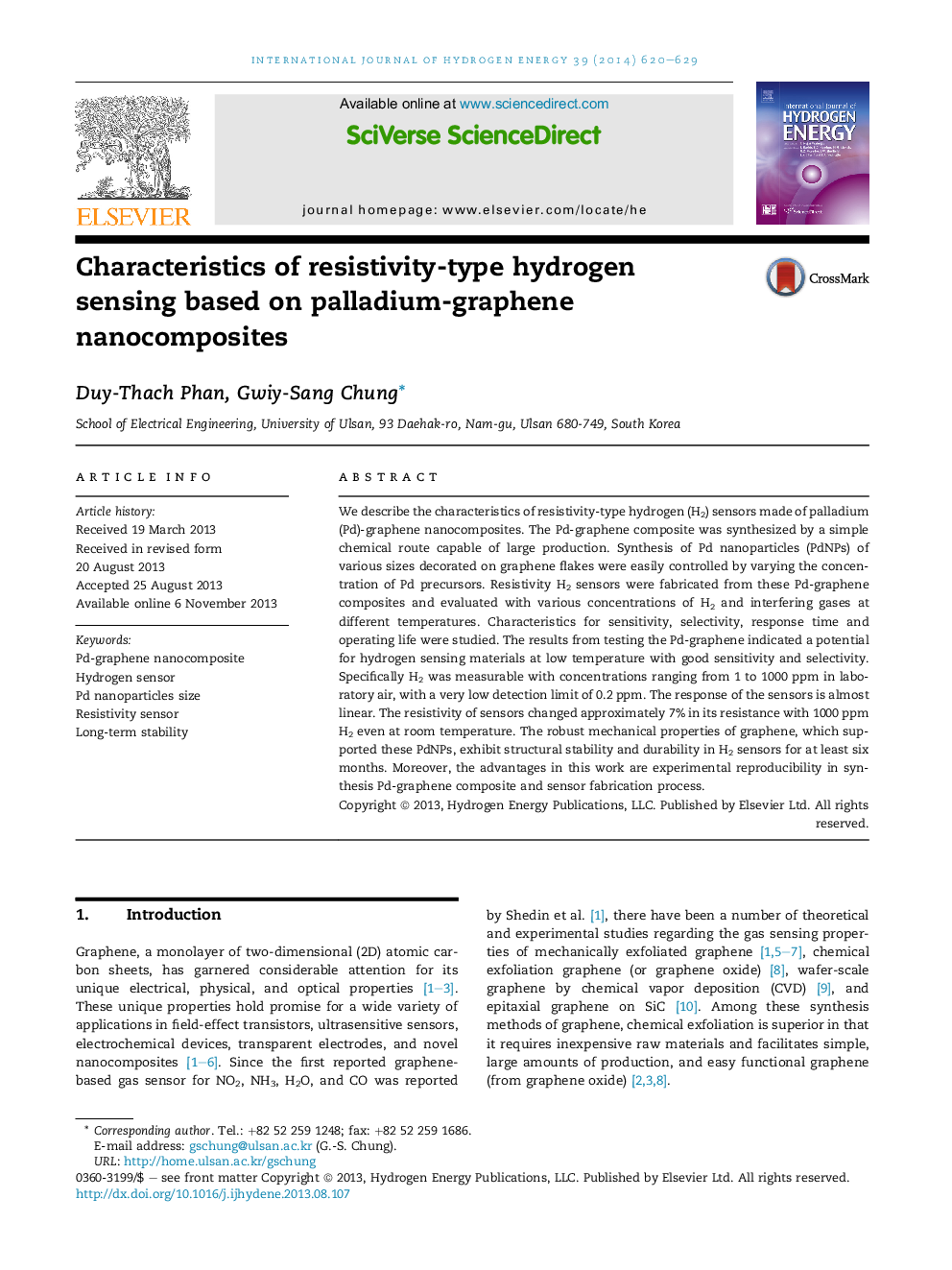| Article ID | Journal | Published Year | Pages | File Type |
|---|---|---|---|---|
| 1273974 | International Journal of Hydrogen Energy | 2014 | 10 Pages |
•Characteristics of resistivity-type H2 sensor based on Pd-graphene composite.•Effects of Pd nanoparticles size in composite for H2 response.•Effects of post-annealing process on H2 response of Pd-graphene composite.•Long-term stability H2 sensor.•Low temperature H2 sensor.
We describe the characteristics of resistivity-type hydrogen (H2) sensors made of palladium (Pd)-graphene nanocomposites. The Pd-graphene composite was synthesized by a simple chemical route capable of large production. Synthesis of Pd nanoparticles (PdNPs) of various sizes decorated on graphene flakes were easily controlled by varying the concentration of Pd precursors. Resistivity H2 sensors were fabricated from these Pd-graphene composites and evaluated with various concentrations of H2 and interfering gases at different temperatures. Characteristics for sensitivity, selectivity, response time and operating life were studied. The results from testing the Pd-graphene indicated a potential for hydrogen sensing materials at low temperature with good sensitivity and selectivity. Specifically H2 was measurable with concentrations ranging from 1 to 1000 ppm in laboratory air, with a very low detection limit of 0.2 ppm. The response of the sensors is almost linear. The resistivity of sensors changed approximately 7% in its resistance with 1000 ppm H2 even at room temperature. The robust mechanical properties of graphene, which supported these PdNPs, exhibit structural stability and durability in H2 sensors for at least six months. Moreover, the advantages in this work are experimental reproducibility in synthesis Pd-graphene composite and sensor fabrication process.
